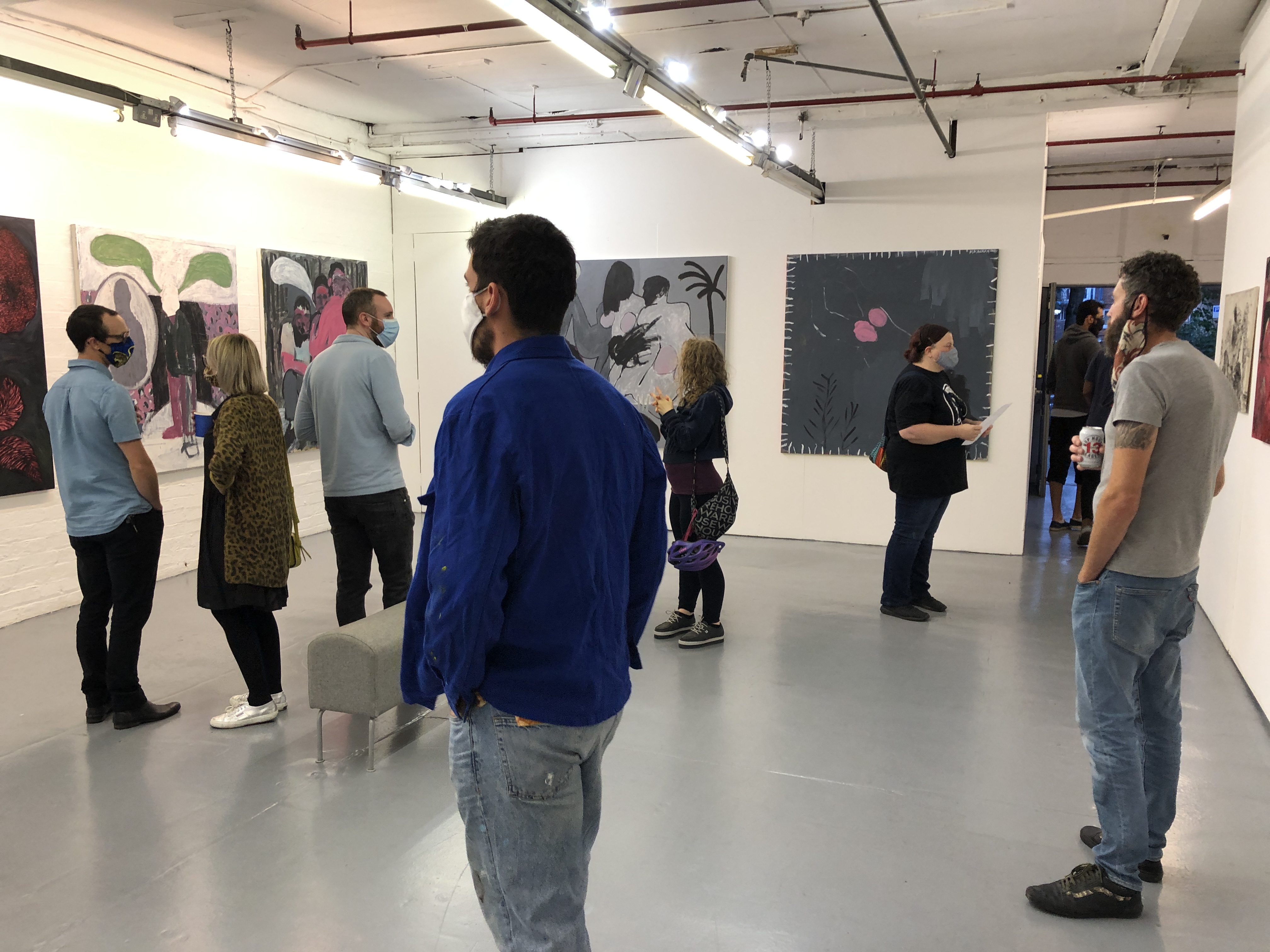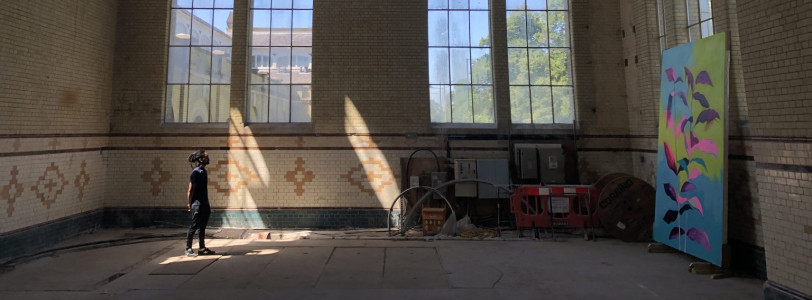Please introduce yourself to the reader and tell us about StudioName.
I am the founder and director of StudioName with my partner Yuka Namekawa. We started the project in 2017 and our role at the project now is mainly oversight and trying to find opportunities and funding for people.
We chose to base the studio in Leicester because we saw artists getting priced out of London and wanted to find an alternative. We drew a circle around London and were looking at cities in any direction. Leicester ticked all the boxes:lots of brilliant old buildings, a big university contingency, great creative courses. But it was under-served by artists, studios and organisations so we thought there was room there for us to come and do something a bit different.
How does StudioName engage with the community?
We have experimented with different forms of engagement over the years to reach our goal. It's taken probably took probably about five or six years to get to those goals. Initially, we set out with a plan, that it would be a community incubator, where artists would have studios rented and there would be a project space for them to do interesting things. Then they would share those skills and knowledge at that time with the wider community.
We partnered with different organisations locally, like De Montfort University and the city council. We ran workshops to varying degrees of success. It took a few years for the local community to try to get on board with our work. Ironically, by the time the funding and impetus for those workshops ran out, the community was completely engaged.
We started then doing community shows that were open to the community and we still do those every year. We also run a series of classes for local Leicester people that are free to attend in ceramics, printmaking, glassmaking.
How did you go about gaining the trust of the community?
Consistency. It's about being trustworthy and being there every week so that people don't dedicate their time to something that will not be there in a few weeks. There’s also a cultural element because it's a very diverse community. Initially we were seen as outsiders. There were barriers to be broken down with the Somali community and also second generation Bangladeshi or Pakistani communities. It was very difficult to gain their trust. But you have to realise that gaining the trust of the community is a long process and you have to be there for the long haul.

You see StudioName as part of a socially-informed art practice. Can you trace for me the differences of how you conceptualise that kind of art making?
I think socially-informed art practice is about artists situating work outside of the traditional gallery space and allowing audiences to come to it on their own works. People are often surprised that the artwork is alive and wild in the world.
It’s also about merging politics and art, where artists are aiming to enact some kind of social change. Then people start to create site specific, or time specific works, in places where they hope to engender that social change. Creativity is at the core of that. Creativity is a way for people to navigate issues in a completely different way.
One project that sticks with me is a project called Women on Waves. This was an artist group who fitted out a Dutch ship as a women's hospital and would sail off the coast of places like Portugal and Ireland, in international waters, to ferry women backwards and forwards if they required an abortion. It was documented and carried out as if it was art.
For me that changed my approach, stopping making specific work and doing one off events, but instead situating things in a community where you can have an ongoing dialogue and have that long-term discourse.
For me, this also informs my approach to ownership. Studios are often the spirit of gentrification and we wanted to be the opposite of that, we wanted studios to be a vehicle of lifting people and the community up.
What have been the main challenges of your time at StudioName?
Our biggest challenge was in our first studios in Tottenham. When I started the project, I said that everyone should have an equal say in decision making. That was a political statement for me. But actually, as soon as the project started generating cash flow, the artists became very involved in how the money was to be spent.
What I learnt was that you really have to back yourself and your vision. If you have decided to include other people’s voices, you have a responsibility to do that at every turn. Because it's not other people's vision, you've invited them to share it. Quite often they don't want to share it, they want to bring in their own vision and it's a really difficult balancing act. But we've got a private studio name. One of the reasons we came to Leicester was to do it again, but do it properly. This time, we made sure that everybody has a voice and everybody is able to put forward their ideas. But at the end of the day, the buck stops with the directors.
What advice would you give someone who wants to start a community art project?
Do it. Make sure that you find the right building, because the building informs everything you do. If we don't inhabit buildings, they inhabit us. It’s about finding a building that you can afford, in the right place and then not trying to force the buildings to do something they can't do. You want to use it to accommodate and bring together the community in question.








0 Comments